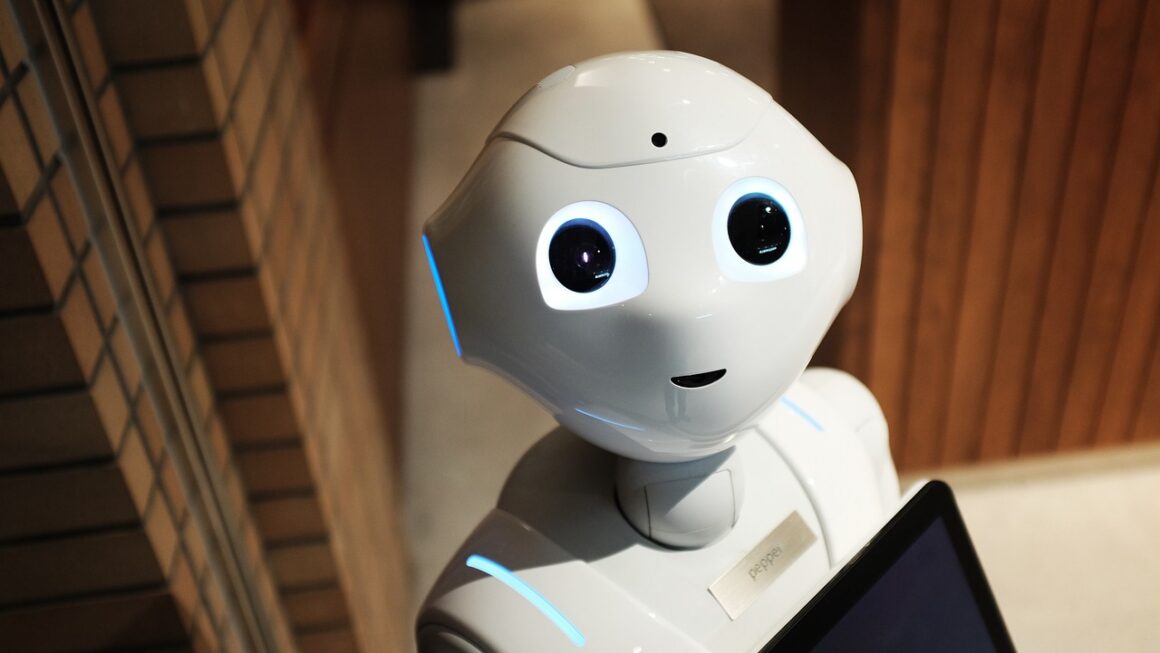AI is no longer a futuristic fantasy; it’s a present-day reality reshaping industries, revolutionizing how we work, and impacting our daily lives in countless ways. As AI technology continues to evolve at breakneck speed, staying ahead of the curve is crucial for businesses and individuals alike. This article delves into the key AI trends that are poised to define the future, providing insights into their potential and practical applications.
AI-Powered Automation: The Rise of Intelligent Processes
Robotic Process Automation (RPA) Evolution
RPA, the automation of repetitive tasks, is getting a significant AI boost. Traditionally, RPA relies on predefined rules. AI integration allows RPA to handle more complex, unstructured data and make intelligent decisions, leading to Intelligent Process Automation (IPA).
- Benefits of IPA:
Increased efficiency and reduced operational costs.
Improved accuracy and minimized errors.
Enhanced scalability and flexibility.
Liberated human employees to focus on higher-value, strategic tasks.
- Example: An insurance company using IPA to automate claims processing. AI analyzes documents, identifies key information, and automatically routes claims to the appropriate department, significantly speeding up the process and reducing manual labor.
AI-Driven Customer Service
Customer service is undergoing a major transformation with AI. Chatbots are becoming more sophisticated, capable of handling a wider range of customer inquiries with greater accuracy and empathy.
- Capabilities:
Personalized responses based on customer history and preferences.
24/7 availability and instant support.
Ability to handle multiple conversations simultaneously.
Seamless escalation to human agents when necessary.
- Example: A retail website using an AI-powered chatbot to answer customer questions about product availability, shipping times, and return policies. The chatbot learns from past interactions and continuously improves its performance.
The Democratization of AI: AI for Everyone
Low-Code/No-Code AI Platforms
One of the most significant trends is the rise of low-code/no-code AI platforms. These platforms allow individuals with limited programming knowledge to build and deploy AI models.
- Advantages:
Reduced development time and costs.
Increased accessibility to AI for non-technical users.
Empowered citizen developers to create AI-powered solutions.
Faster prototyping and experimentation.
- Example: A marketing team using a no-code AI platform to predict customer churn. By simply uploading their customer data and defining the target variable, they can train an AI model that identifies customers at risk of leaving.
AI-as-a-Service (AIaaS)
AIaaS provides pre-trained AI models and tools that can be easily integrated into existing applications and workflows. This makes AI more accessible and affordable for businesses of all sizes.
- Benefits of AIaaS:
No need for expensive AI infrastructure or specialized expertise.
Pay-as-you-go pricing model.
Access to cutting-edge AI technologies.
Faster time-to-market for AI-powered solutions.
- Example: A small e-commerce business using an AIaaS platform to personalize product recommendations for their customers. The platform analyzes customer browsing history and purchase data to suggest relevant products, increasing sales and customer satisfaction.
Generative AI: Creating New Possibilities
Text-to-Image Generation
Generative AI is capable of creating new content, including text, images, and even code. Text-to-image models, like DALL-E 2, Stable Diffusion, and Midjourney, are rapidly advancing, allowing users to generate stunningly realistic and imaginative images from simple text prompts.
- Applications:
Creating marketing materials and advertisements.
Generating concept art and illustrations.
Designing virtual environments and game assets.
Aiding in scientific research and data visualization.
- Example: A small business owner using a text-to-image generator to create a logo for their new company. By simply describing the desired logo in a text prompt, they can generate multiple variations and choose the one that best represents their brand.
Code Generation and Software Development
Generative AI is also transforming software development. AI models can now generate code snippets, complete functions, and even entire applications based on natural language descriptions.
- Impact on Software Development:
Increased developer productivity.
Reduced coding errors.
Faster development cycles.
Lower barriers to entry for aspiring developers.
- Example: A software engineer using an AI code generation tool to quickly generate the code for a complex data processing algorithm. The AI tool understands the engineer’s requirements and generates optimized code, saving them significant time and effort.
Responsible AI: Ensuring Ethical and Transparent AI
Addressing Bias in AI
As AI systems become more prevalent, it’s crucial to address the issue of bias. AI models can perpetuate and amplify existing biases in the data they are trained on, leading to unfair or discriminatory outcomes.
- Strategies for Mitigating Bias:
Carefully curating and pre-processing training data.
Using fairness-aware algorithms.
Regularly auditing AI models for bias.
Promoting diversity in AI development teams.
- Example: A financial institution using bias detection tools to identify and mitigate bias in their loan application AI model. They ensure that the model does not discriminate against individuals based on their race, gender, or other protected characteristics.
Explainable AI (XAI)
Explainable AI (XAI) aims to make AI decision-making more transparent and understandable. XAI techniques allow users to understand why an AI model made a particular prediction or decision.
- Benefits of XAI:
Increased trust and acceptance of AI systems.
Improved accountability and transparency.
Identification of potential errors and biases.
Compliance with regulatory requirements.
- Example: A healthcare provider using XAI to understand why an AI model predicted a patient was at high risk of developing a certain disease. Understanding the factors that contributed to the prediction allows the doctor to make more informed treatment decisions.
Conclusion
AI is a transformative technology with the potential to revolutionize every aspect of our lives. By understanding the key AI trends discussed in this article, businesses and individuals can better prepare for the future and harness the power of AI to achieve their goals. From AI-powered automation and the democratization of AI to the emergence of generative AI and the focus on responsible AI, the future of AI is bright, promising innovation, efficiency, and new possibilities for all. Embrace these trends, stay informed, and be ready to adapt to the ever-evolving landscape of artificial intelligence.




